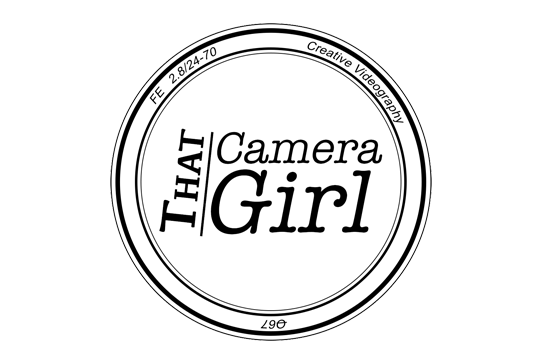Let’s be honest, it can take hours or even days to create a video when you’re first starting out. Figuring out what you’re gonna say, setting up the equipment… and then there’s all the editing!
Getting just one video off the ground can feel really overwhelming especially when there are so many other things to do in your business.
Here are four tips to save time filming and editing videos and get your content out there to the person who needs to hear it.

1. Plan and prepare in advance
I know, this one sounds pretty obvious but there are some things that are important to consider to make a solid plan.
The first thing is of course the content. What are you going to make a video about? If you’re in the early stages of creating video content and you’re struggling to come up with ideas for videos here are some things you can do to start building up a library of ideas to draw from when it’s time to record.
Firstly, throughout the day jot down any idea or thought you have that you think you might want to share with your audience in a video. It doesn’t matter if it’s one sentence or something that you don’t even know if people might be interested in.
Write it down anyway because there could come a time when you see a need for it or someone asks you this question and you have the notes about it already there.
I am always writing down ideas on sticky notes, in my diary, or even just a note in my phone so I can get the thoughts out, set it aside and come back to it later – and not have to worry about forgetting all those ideas.
If a client or a potential client asks you a question about a product or a service you offer, think about whether this might be something that other people might want to know if they’re considering buying from or working with you. Could you answer this question in a video or provide a demonstration of some sort?
When you make a habit of writing ideas down you’ll have a whole pool of video topics to draw from when you want to make a video.
Once you’ve got your topic, make an outline of what you want to talk about. You can start with headings like I do and fill it out from there. Use dot points or full sentences, it doesn’t matter as long as you know what it means and it will prompt you with what you want to say next.
On the other end of the spectrum, you could always just try winging it, but this could send you off on tangents with no solid structure to your video and end up costing you more time sitting there in front of the camera not knowing what you’re going to say next.
After you’ve made a few videos you’ll figure out what works for you, how much of an outline you want to create and get into a rhythm that will get easier every time.
The other side to this is making sure you have your equipment and filming space ready. As much as possible I like to leave my camera and lights set up in the space I use to record videos.
This isn’t always possible as I am a videographer and I kind of need that gear to go on shoots but if I know there is a window of time that I don’t have a lot of filming on, I will leave my gear set up and get as many videos recorded as I can in that time.
I always use the same space to film, just changing up the colours or items on my desk. This also saves time because I’m not looking for another location to style from scratch every time I record.
2. Batch record
If you’ve gone to all the trouble of setting up your film equipment and put on make up, sent your partner or kids out of the house to get some peace and quiet, make the most of it by filming more than one video in a sitting.
And this goes for not just the filming, but that scripting, the editing, the uploading. Batching any task is way more efficient than going through the process from start to finish with one video and then start to finish with your next video. Focussed work helps eliminate procrastination.
I try to film at least two videos in a sitting which helps me to stay on top of my content calendar and really make the most of the time I spend in preparation. If you’re able to bank-up video content, it also gives you more flexibility if you don’t have time to do any recording one week because you have content scheduled, ready to go.
If the thought of this overwhelms you I would recommend spending some time just planning out some videos. Forget recording for now even if it that means you don’t post any content this week.
You will benefit more in the long run by spending time preparing and then sitting down to do a batch of recordings and a batch of edits than by scrambling to get one video done each week, which will end up costing you more time.
3. Film in chunks
This reinforces the importance of a solid outline. You do not have to remember your entire script, film it in chunks one sentence at a time if that’s what you need to do.
If you have your notes outlined in a document you could put that on your phone on your lap and have a look at it between each talking point. Only move on to your next talking point once you are completely happy with how the last one came out.
That way, you know that each final take of a talking point is going to be the best one, so you can save time editing by actually editing backwards. Instead of having to watch through the entire video again and figure out which take is the best, you can scrub your timeline backwards and easily know which takes are staying and which takes are out.
You can also leave yourself or your editor signals like a couple of claps that show up in the waveforms or a gesture that could mean ‘retake’ or ‘cut this piece completely.’ Your future self will thank you for it.
4. Create presets, templates and store assets
So that you’re not reinventing the wheel every time you create a video save presets of your titles, any graphics, your logo, your brand colours and music so you can draw from what you already have and not spend more time finding new assets and recreating the same graphics every time.
I have a folder of assets that I can drag-and-drop straight into my edit software that include my title animation, transitions, name super, logo, sound effects and most used music.
Anything that you can do to make it easier next time, do it. A few seconds here and a few seconds there making titles or searching for music add up to a lot of seconds that could be spent elsewhere.
If creating titles and graphics are not your thing, check out this video where I talk about some of the tools I use and recommend to creators to add some finesse and final touches to your videos.
Invest time in the beginning, so you can benefit in the long term. Like anything in business, setting up a good system in the front end will save you so much time and stress, and actually enjoy the process of creating.
Read on for tips on how to come up with new video ideas.
For more video tips and techniques subscribe on YouTube.
